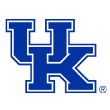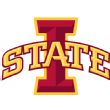Projecting the 2019 NFL draft's top running backs
ESPN PLUS ($ MATERIAL)
Advanced statistics and internet draftniks often agree more than they disagree about the best prospects in a given draft. For example, take Football Outsiders' metric for projecting the likelihood of success for running backs, BackCAST. Last year, BackCAST agreed with virtually everyone who followed the NFL draft that Saquon Barkley was the best running back prospect by a country mile.
Every once in a while, however, advanced statistics will break strongly from conventional wisdom. For BackCAST, this is one of those drafts. This year, up is down and down is up, as a prospect with a third-round grade rockets to the top of BackCAST's projection.
BackCAST projects NFL running back success based on statistics that have correlated with success in the past. Historically, a college running back with a good size-speed combination and a high average in yards per carry, and who represented a large percentage of his college team's running attack, is more likely to succeed at the NFL level. BackCAST considers these factors and projects the degree to which the running back will exceed the NFL production of an "average" drafted running back during his first five years in the NFL.
For example, a running back with a +50% BackCAST is projected to gain 50 percent more yards than the "average" drafted running back. BackCAST also projects whether each running back is likely to be heavily involved in the receiving game or is more of a "ground-and-pound" back.
What follows are some of the most notable BackCAST projections for the running back prospects available in this month's NFL draft.
Click here for more detail on how BackCAST works.

Darrell Henderson, Memphis Tigers
BackCAST score: +116.1%
Type of back: Receiving
Similar historical prospects: Melvin Gordon, Felix Jones
Henderson is by far BackCAST's favorite prospect in this class, and it likes him far more than conventional wisdom does. Scouts Inc. rates Henderson as only the sixth-best running back prospect and the No. 95 prospect overall. So what does BackCAST see in Henderson that others do not?
Henderson's best data point is his fantastic yards-per-attempt rate. Henderson averaged an absolutely bonkers 8.2 yards per attempt. BackCAST adjusts that down slightly because he has only 431 career attempts, but Henderson still comes out of the adjustment with a great 7.74 adjusted yards per attempt. His adjusted yards per attempt is better than all prospects in the BackCAST database except for Gordon. Henderson may have had good circumstances at Memphis, but he also should get credit for capitalizing on those circumstances in a big way.
That said, the rest of Henderson's BackCAST metrics are just average. He ran a 4.49-second 40-yard dash at 208 pounds, which is not bad, but it's not exactly head-turning. Moreover, despite his historic efficiency, Memphis' coaches ceded a significant number of carries to other players. Part of the reason could be simply that the scheme was to run the ball a lot, but again, Henderson had only 431 career attempts, so he certainly could have carried more of the load.
On the other hand, Henderson also had strong receiving numbers, suggesting that he also should have value catching passes out of the backfield.

Trayveon Williams, Texas A&M Aggies
BackCAST score: +57.3%
Type of back: Balanced
Similar historical prospects: Jonathan Stewart, Laurence Maroney
Williams is the second-best running back prospect in this class, at least according to BackCAST. However, there is a huge gap between Henderson and Williams. The reason has less to do with Henderson's strength as a prospect and more to do with what BackCAST sees as a weak class. Williams is a fine prospect -- especially for a player sometimes rated as a fourth-round pick -- but he is an unusually weak No. 2 prospect. To wit, last year BackCAST rated Royce Freeman, Derrius Guice, Rashaad Penny, Nick Chubb and Ronald Jones all higher than it rates Williams.
Williams is similar to Henderson in most ways, except that he shouldered a heavier load of his team's carries and lacks Henderson's freakish yards-per-attempt numbers.

Justice Hill, Oklahoma State Cowboys
BackCAST score: +46.5%
Type of back: Balanced
Similar historical prospects: C.J. Spiller, Jahvid Best
Hill is this class's speedster, clocking in at 4.40 seconds in the 40-yard dash at the combine. However, he is relatively small at only 198 pounds, one of only two running backs invited to the combine who weighed in at less than 200 pounds.
Of course, if you looked only at Hill's stat line, you might guess that he was a ground-and-pound back. He shared a large load of the Cowboys' carries as a senior, but he had a relatively low 5.60 average yards per attempt.

Bryce Love, Stanford Cardinal
BackCAST score: +39.3%
Type of back: Balanced
Similar historical prospects: Mikel Leshoure, C.J. Prosise
Love has had a somewhat unusual college career. He was stuck on the depth chart behind Christian McCaffrey at Stanford until his junior year, then burst out in a big way. As a junior, Love exploded for 2,118 yards and averaged a wild 8.05 yards per carry. Love made the (perhaps unwise) decision to return for his senior year, and it was a disaster. He averaged only 4.45 yards per carry as a senior and tore an ACL, which kept him from running the 40-yard dash at the combine. Overall, however, he averaged 6.79 yards per carry over his college career, which is excellent.
You could make a fairly compelling argument that BackCAST underrates his talent. Love had a strong average yards per attempt in his freshman and sophomore years, too, which does suggest that his senior year was a bit of a fluke. His share of the backfield at Stanford was also affected by two circumstances somewhat outside of his control: McCaffrey's presence on the roster and then the ACL tear. Love is reportedly very fast -- some reports say that he could run a sub-4.40 40-yard dash -- but he could not show off his speed in pre-draft workouts due to the injury.
These kind of reports should be taken with a grain of salt, of course; this type of hype is often exposed at the combine, where "sub-4.4" players ultimately prove to be "sub-4.7" players. But a team could certainly justify spending a mid-round pick on Love if he checks out medically.

Benny Snell, Kentucky Wildcats
BackCAST score: +35.3%
Type of back: Ground-and-pound
Similar historical prospects: Alfred Morris, Samaje Perine
Snell had more college career rushing attempts than any running back invited to the combine this year, save for Washington's Myles Gaskin. As a result, Snell's AOEPS (BackCAST's measure of running back usage) is the best in this class, and it provides a major boost to his projection.
However, Snell is not particularly good in any of BackCAST's other metrics. Yes, he carried the ball a lot, but he averaged only 5.26 yards per carry. Snell is also unusually slow: He ran the 40-yard dash in 4.66 seconds, which is bad even for a larger back. Snell's upside is probably Morris, who is the most successful running back in BackCAST's database who ran a 4.66 40-yard dash or slower.

David Montgomery, Iowa State Cyclones
BackCAST score: +24.0%
Type of back: Balanced
Similar historical prospects: Javorius Allen, Correll Buckhalter
Montgomery is similar to Snell in a lot of ways. He excels in AOEPS (attempts over expected per season), but he falls short otherwise and was even less efficient than Snell; he averaged only 4.7 yards per carry. Montgomery is also slow for a running back prospect, as he ran a 4.63-second 40 at the combine. His time is a little faster than Snell's, but he is a few pounds lighter. Montgomery's one edge over Snell is in the receiving game, as he averaged 15.7 receiving yards per game.

Damien Harris, Alabama Crimson Tide
BackCAST score: -8.4%
Type of back: Ground-and-pound
Similar historical prospects: Carlos Hyde, Montee Ball

Josh Jacobs, Alabama Crimson Tide
BackCAST score: -39.3%
Type of back: Ground-and-pound
Similar historical prospects: Chris Perry, Julius Jones
If you have been following the 2019 draft prospects closely, you might have thought that we had forgotten about Jacobs, whom many consider to be the best running back in this class. Jacobs' BackCAST is unusually low for a running back who could go in the first two rounds.
Below is a chart of the running back prospects selected in the first two rounds of the NFL draft with the lowest BackCAST projections:
<aside class="inline inline-table" style="box-sizing: border-box; font-family: -apple-system, BlinkMacSystemFont, Roboto, Arial, "Helvetica Neue", Helvetica, sans-serif; height: 476px; border: 1px solid rgb(220, 221, 223); clear: both; margin: 6px 0px 18px; padding: 15px; width: 565px; color: rgb(0, 0, 0); font-size: 16px;">
<tbody>
</tbody>
</aside>
That is not a great list. So why is BackCAST so down on Jacobs?
When a running back fails to even lead his own team in rushing attempts, it is typically a major red flag. Jacobs had fewer carries than his teammate Harris, whom BackCAST does not particularly like either. In terms of yards, Jacobs was not even the second-leading rusher on his own team. That distinction goes to sophomore Najee Harris, who had three fewer carries but 140 more rushing yards. Of the top 50 most productive running backs in BackCAST's database, only one running back -- Alvin Kamara -- had a worse AOEPS than Jacobs.
That leads to another issue with Jacobs' prospects: his relative inefficiency. Last year, Jacobs averaged only 5.33 yards per carry, which was a full half-yard per carry less than Damien Harris and nearly a yard and a half per carry less than Najee Harris. Indeed, Damien Harris is a similar prospect to Jacobs, but he edges Jacobs out in BackCAST because he had a larger share of Alabama's carries and a higher average yards per carry.
To top it off, Jacobs appears to be rather slow. He did not run at the combine, but reports from his pro day suggest that he, at the fastest, ran the 40-yard dash in 4.60 seconds. That is not a time that will doom a running back to failure, but relatively slow college running backs who succeed at the NFL level typically have more college production than Jacobs did. Unfortunately for Jacobs, his BackCAST numbers are simply poor overall.
Methodology
BackCAST is based on a statistical analysis of all of the Division I halfbacks drafted in the years 1998 to 2017, and it measures the following:
ESPN PLUS ($ MATERIAL)
Advanced statistics and internet draftniks often agree more than they disagree about the best prospects in a given draft. For example, take Football Outsiders' metric for projecting the likelihood of success for running backs, BackCAST. Last year, BackCAST agreed with virtually everyone who followed the NFL draft that Saquon Barkley was the best running back prospect by a country mile.
Every once in a while, however, advanced statistics will break strongly from conventional wisdom. For BackCAST, this is one of those drafts. This year, up is down and down is up, as a prospect with a third-round grade rockets to the top of BackCAST's projection.
BackCAST projects NFL running back success based on statistics that have correlated with success in the past. Historically, a college running back with a good size-speed combination and a high average in yards per carry, and who represented a large percentage of his college team's running attack, is more likely to succeed at the NFL level. BackCAST considers these factors and projects the degree to which the running back will exceed the NFL production of an "average" drafted running back during his first five years in the NFL.
For example, a running back with a +50% BackCAST is projected to gain 50 percent more yards than the "average" drafted running back. BackCAST also projects whether each running back is likely to be heavily involved in the receiving game or is more of a "ground-and-pound" back.
What follows are some of the most notable BackCAST projections for the running back prospects available in this month's NFL draft.
Click here for more detail on how BackCAST works.

Darrell Henderson, Memphis Tigers
BackCAST score: +116.1%
Type of back: Receiving
Similar historical prospects: Melvin Gordon, Felix Jones
Henderson is by far BackCAST's favorite prospect in this class, and it likes him far more than conventional wisdom does. Scouts Inc. rates Henderson as only the sixth-best running back prospect and the No. 95 prospect overall. So what does BackCAST see in Henderson that others do not?
Henderson's best data point is his fantastic yards-per-attempt rate. Henderson averaged an absolutely bonkers 8.2 yards per attempt. BackCAST adjusts that down slightly because he has only 431 career attempts, but Henderson still comes out of the adjustment with a great 7.74 adjusted yards per attempt. His adjusted yards per attempt is better than all prospects in the BackCAST database except for Gordon. Henderson may have had good circumstances at Memphis, but he also should get credit for capitalizing on those circumstances in a big way.
That said, the rest of Henderson's BackCAST metrics are just average. He ran a 4.49-second 40-yard dash at 208 pounds, which is not bad, but it's not exactly head-turning. Moreover, despite his historic efficiency, Memphis' coaches ceded a significant number of carries to other players. Part of the reason could be simply that the scheme was to run the ball a lot, but again, Henderson had only 431 career attempts, so he certainly could have carried more of the load.
On the other hand, Henderson also had strong receiving numbers, suggesting that he also should have value catching passes out of the backfield.

Trayveon Williams, Texas A&M Aggies
BackCAST score: +57.3%
Type of back: Balanced
Similar historical prospects: Jonathan Stewart, Laurence Maroney
Williams is the second-best running back prospect in this class, at least according to BackCAST. However, there is a huge gap between Henderson and Williams. The reason has less to do with Henderson's strength as a prospect and more to do with what BackCAST sees as a weak class. Williams is a fine prospect -- especially for a player sometimes rated as a fourth-round pick -- but he is an unusually weak No. 2 prospect. To wit, last year BackCAST rated Royce Freeman, Derrius Guice, Rashaad Penny, Nick Chubb and Ronald Jones all higher than it rates Williams.
Williams is similar to Henderson in most ways, except that he shouldered a heavier load of his team's carries and lacks Henderson's freakish yards-per-attempt numbers.

Justice Hill, Oklahoma State Cowboys
BackCAST score: +46.5%
Type of back: Balanced
Similar historical prospects: C.J. Spiller, Jahvid Best
Hill is this class's speedster, clocking in at 4.40 seconds in the 40-yard dash at the combine. However, he is relatively small at only 198 pounds, one of only two running backs invited to the combine who weighed in at less than 200 pounds.
Of course, if you looked only at Hill's stat line, you might guess that he was a ground-and-pound back. He shared a large load of the Cowboys' carries as a senior, but he had a relatively low 5.60 average yards per attempt.

Bryce Love, Stanford Cardinal
BackCAST score: +39.3%
Type of back: Balanced
Similar historical prospects: Mikel Leshoure, C.J. Prosise
Love has had a somewhat unusual college career. He was stuck on the depth chart behind Christian McCaffrey at Stanford until his junior year, then burst out in a big way. As a junior, Love exploded for 2,118 yards and averaged a wild 8.05 yards per carry. Love made the (perhaps unwise) decision to return for his senior year, and it was a disaster. He averaged only 4.45 yards per carry as a senior and tore an ACL, which kept him from running the 40-yard dash at the combine. Overall, however, he averaged 6.79 yards per carry over his college career, which is excellent.
You could make a fairly compelling argument that BackCAST underrates his talent. Love had a strong average yards per attempt in his freshman and sophomore years, too, which does suggest that his senior year was a bit of a fluke. His share of the backfield at Stanford was also affected by two circumstances somewhat outside of his control: McCaffrey's presence on the roster and then the ACL tear. Love is reportedly very fast -- some reports say that he could run a sub-4.40 40-yard dash -- but he could not show off his speed in pre-draft workouts due to the injury.
These kind of reports should be taken with a grain of salt, of course; this type of hype is often exposed at the combine, where "sub-4.4" players ultimately prove to be "sub-4.7" players. But a team could certainly justify spending a mid-round pick on Love if he checks out medically.

Benny Snell, Kentucky Wildcats
BackCAST score: +35.3%
Type of back: Ground-and-pound
Similar historical prospects: Alfred Morris, Samaje Perine
Snell had more college career rushing attempts than any running back invited to the combine this year, save for Washington's Myles Gaskin. As a result, Snell's AOEPS (BackCAST's measure of running back usage) is the best in this class, and it provides a major boost to his projection.
However, Snell is not particularly good in any of BackCAST's other metrics. Yes, he carried the ball a lot, but he averaged only 5.26 yards per carry. Snell is also unusually slow: He ran the 40-yard dash in 4.66 seconds, which is bad even for a larger back. Snell's upside is probably Morris, who is the most successful running back in BackCAST's database who ran a 4.66 40-yard dash or slower.

David Montgomery, Iowa State Cyclones
BackCAST score: +24.0%
Type of back: Balanced
Similar historical prospects: Javorius Allen, Correll Buckhalter
Montgomery is similar to Snell in a lot of ways. He excels in AOEPS (attempts over expected per season), but he falls short otherwise and was even less efficient than Snell; he averaged only 4.7 yards per carry. Montgomery is also slow for a running back prospect, as he ran a 4.63-second 40 at the combine. His time is a little faster than Snell's, but he is a few pounds lighter. Montgomery's one edge over Snell is in the receiving game, as he averaged 15.7 receiving yards per game.

Damien Harris, Alabama Crimson Tide
BackCAST score: -8.4%
Type of back: Ground-and-pound
Similar historical prospects: Carlos Hyde, Montee Ball

Josh Jacobs, Alabama Crimson Tide
BackCAST score: -39.3%
Type of back: Ground-and-pound
Similar historical prospects: Chris Perry, Julius Jones
If you have been following the 2019 draft prospects closely, you might have thought that we had forgotten about Jacobs, whom many consider to be the best running back in this class. Jacobs' BackCAST is unusually low for a running back who could go in the first two rounds.
Below is a chart of the running back prospects selected in the first two rounds of the NFL draft with the lowest BackCAST projections:
<aside class="inline inline-table" style="box-sizing: border-box; font-family: -apple-system, BlinkMacSystemFont, Roboto, Arial, "Helvetica Neue", Helvetica, sans-serif; height: 476px; border: 1px solid rgb(220, 221, 223); clear: both; margin: 6px 0px 18px; padding: 15px; width: 565px; color: rgb(0, 0, 0); font-size: 16px;">
| PLAYER | YEAR | ROUND | PICK | TEAM | COLLEGE | BACKCAST |
|---|---|---|---|---|---|---|
| Montee Ball | 2013 | 2 | 58 | DEN | Wisconsin | -9.5% |
| Chris Perry | 2004 | 1 | 26 | CIN | Michigan | -12.7% |
| Mike Cloud | 1999 | 2 | 54 | KC | Boston College | -12.8% |
| DeShaun Foster | 2002 | 2 | 34 | CAR | UCLA | -14.7% |
| Ameer Abdullah | 2015 | 2 | 54 | DET | Nebraska | -21.9% |
| Christine Michael | 2013 | 2 | 62 | SEA | Texas A&M | -26.3% |
| Montario Hardesty | 2010 | 2 | 59 | CLE | Tennessee | -33.0% |
| Travis Henry | 2001 | 2 | 58 | BUF | Tennessee | -35.1% |
| Julius Jones | 2004 | 2 | 43 | DAL | Notre Dame | -38.2% |
| Josh Jacobs | 2019 | ? | ? | ? | Alabama | -39.3% |
| Chris Henry | 2007 | 2 | 50 | TEN | Arizona | -45.5% |
| John Avery | 1998 | 1 | 29 | MIA | Mississippi | -46.8% |
| Brandon Jackson | 2007 | 2 | 63 | GB | Nebraska | -60.6% |
| Kenny Irons | 2007 | 2 | 49 | CIN | Auburn | -63.2% |
| Joe Montgomery | 1999 | 2 | 49 | NYG | Ohio St. | -73.7% |
<tbody>
</tbody>
</aside>
That is not a great list. So why is BackCAST so down on Jacobs?
When a running back fails to even lead his own team in rushing attempts, it is typically a major red flag. Jacobs had fewer carries than his teammate Harris, whom BackCAST does not particularly like either. In terms of yards, Jacobs was not even the second-leading rusher on his own team. That distinction goes to sophomore Najee Harris, who had three fewer carries but 140 more rushing yards. Of the top 50 most productive running backs in BackCAST's database, only one running back -- Alvin Kamara -- had a worse AOEPS than Jacobs.
That leads to another issue with Jacobs' prospects: his relative inefficiency. Last year, Jacobs averaged only 5.33 yards per carry, which was a full half-yard per carry less than Damien Harris and nearly a yard and a half per carry less than Najee Harris. Indeed, Damien Harris is a similar prospect to Jacobs, but he edges Jacobs out in BackCAST because he had a larger share of Alabama's carries and a higher average yards per carry.
To top it off, Jacobs appears to be rather slow. He did not run at the combine, but reports from his pro day suggest that he, at the fastest, ran the 40-yard dash in 4.60 seconds. That is not a time that will doom a running back to failure, but relatively slow college running backs who succeed at the NFL level typically have more college production than Jacobs did. Unfortunately for Jacobs, his BackCAST numbers are simply poor overall.
Methodology
BackCAST is based on a statistical analysis of all of the Division I halfbacks drafted in the years 1998 to 2017, and it measures the following:
- The prospect's weight at the NFL combine.
- The prospect's 40-yard dash at the NFL combine. If he did not run at the combine, BackCAST uses his pro day time.
- The prospect's yards per attempt with an adjustment for running backs who had fewer career carries than an average drafted running back.
- The prospect's AOEPS, which measures how much, on average, the prospect's team used him in the running game during his career relative to the usage of an average drafted running back during the same year of eligibility.
- The prospect's receiving yards per game in his college career.





